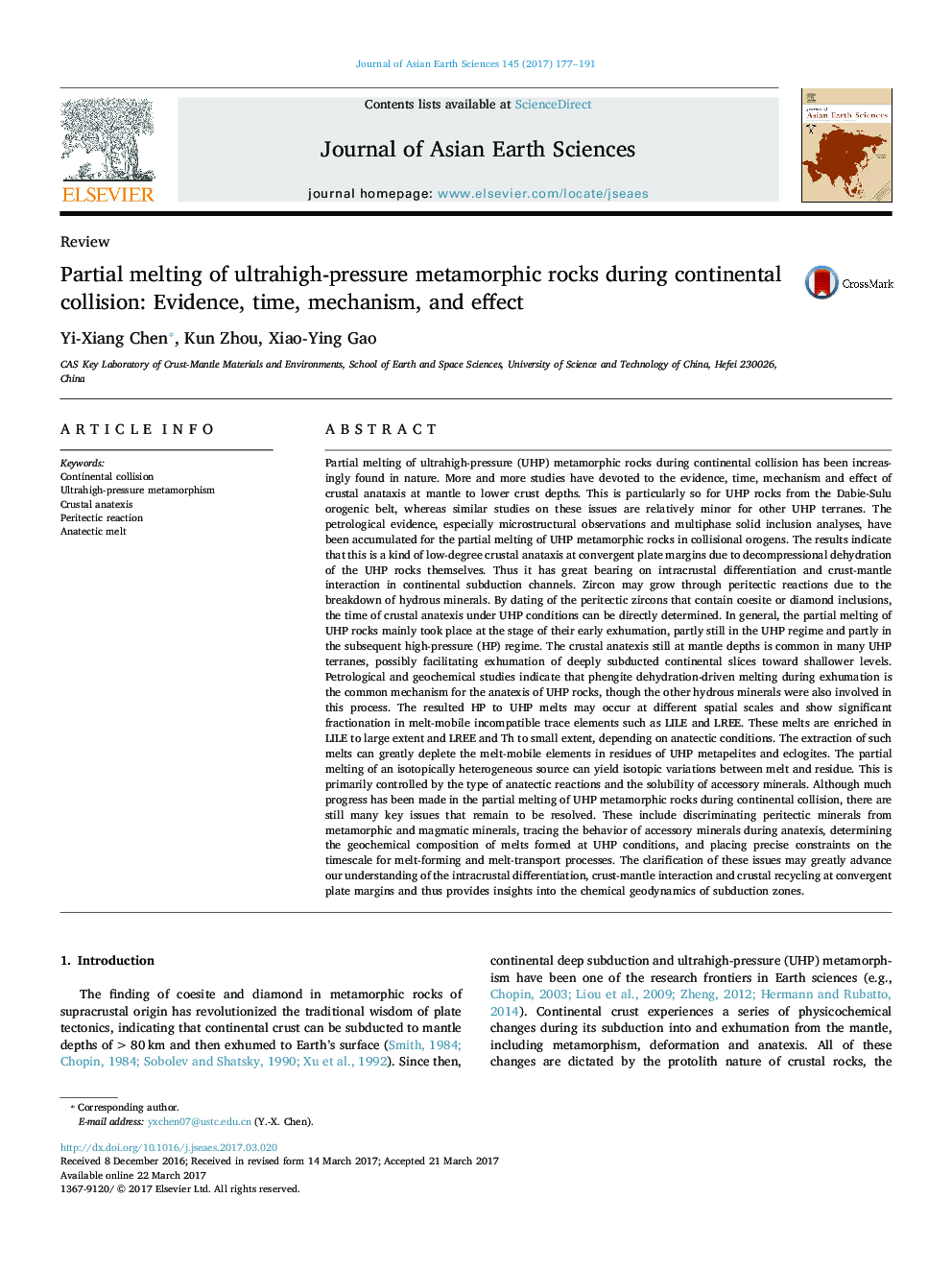| کد مقاله | کد نشریه | سال انتشار | مقاله انگلیسی | نسخه تمام متن |
|---|---|---|---|---|
| 5785956 | 1414092 | 2017 | 15 صفحه PDF | دانلود رایگان |
- Petrological evidence for partial melting of UHP metamorphic rocks during continental collision is summarized.
- The P-T conditions and timing for the anatexis of UHP rocks are reviewed.
- The dehydration reaction of hydrous minerals serves as the major mechanism for the anatexis during exhumation.
- Geochemical differentiation is significant during the low-degree partial melting of crustal rocks.
Partial melting of ultrahigh-pressure (UHP) metamorphic rocks during continental collision has been increasingly found in nature. More and more studies have devoted to the evidence, time, mechanism and effect of crustal anataxis at mantle to lower crust depths. This is particularly so for UHP rocks from the Dabie-Sulu orogenic belt, whereas similar studies on these issues are relatively minor for other UHP terranes. The petrological evidence, especially microstructural observations and multiphase solid inclusion analyses, have been accumulated for the partial melting of UHP metamorphic rocks in collisional orogens. The results indicate that this is a kind of low-degree crustal anataxis at convergent plate margins due to decompressional dehydration of the UHP rocks themselves. Thus it has great bearing on intracrustal differentiation and crust-mantle interaction in continental subduction channels. Zircon may grow through peritectic reactions due to the breakdown of hydrous minerals. By dating of the peritectic zircons that contain coesite or diamond inclusions, the time of crustal anatexis under UHP conditions can be directly determined. In general, the partial melting of UHP rocks mainly took place at the stage of their early exhumation, partly still in the UHP regime and partly in the subsequent high-pressure (HP) regime. The crustal anatexis still at mantle depths is common in many UHP terranes, possibly facilitating exhumation of deeply subducted continental slices toward shallower levels. Petrological and geochemical studies indicate that phengite dehydration-driven melting during exhumation is the common mechanism for the anatexis of UHP rocks, though the other hydrous minerals were also involved in this process. The resulted HP to UHP melts may occur at different spatial scales and show significant fractionation in melt-mobile incompatible trace elements such as LILE and LREE. These melts are enriched in LILE to large extent and LREE and Th to small extent, depending on anatectic conditions. The extraction of such melts can greatly deplete the melt-mobile elements in residues of UHP metapelites and eclogites. The partial melting of an isotopically heterogeneous source can yield isotopic variations between melt and residue. This is primarily controlled by the type of anatectic reactions and the solubility of accessory minerals. Although much progress has been made in the partial melting of UHP metamorphic rocks during continental collision, there are still many key issues that remain to be resolved. These include discriminating peritectic minerals from metamorphic and magmatic minerals, tracing the behavior of accessory minerals during anatexis, determining the geochemical composition of melts formed at UHP conditions, and placing precise constraints on the timescale for melt-forming and melt-transport processes. The clarification of these issues may greatly advance our understanding of the intracrustal differentiation, crust-mantle interaction and crustal recycling at convergent plate margins and thus provides insights into the chemical geodynamics of subduction zones.
Journal: Journal of Asian Earth Sciences - Volume 145, Part A, 1 September 2017, Pages 177-191
